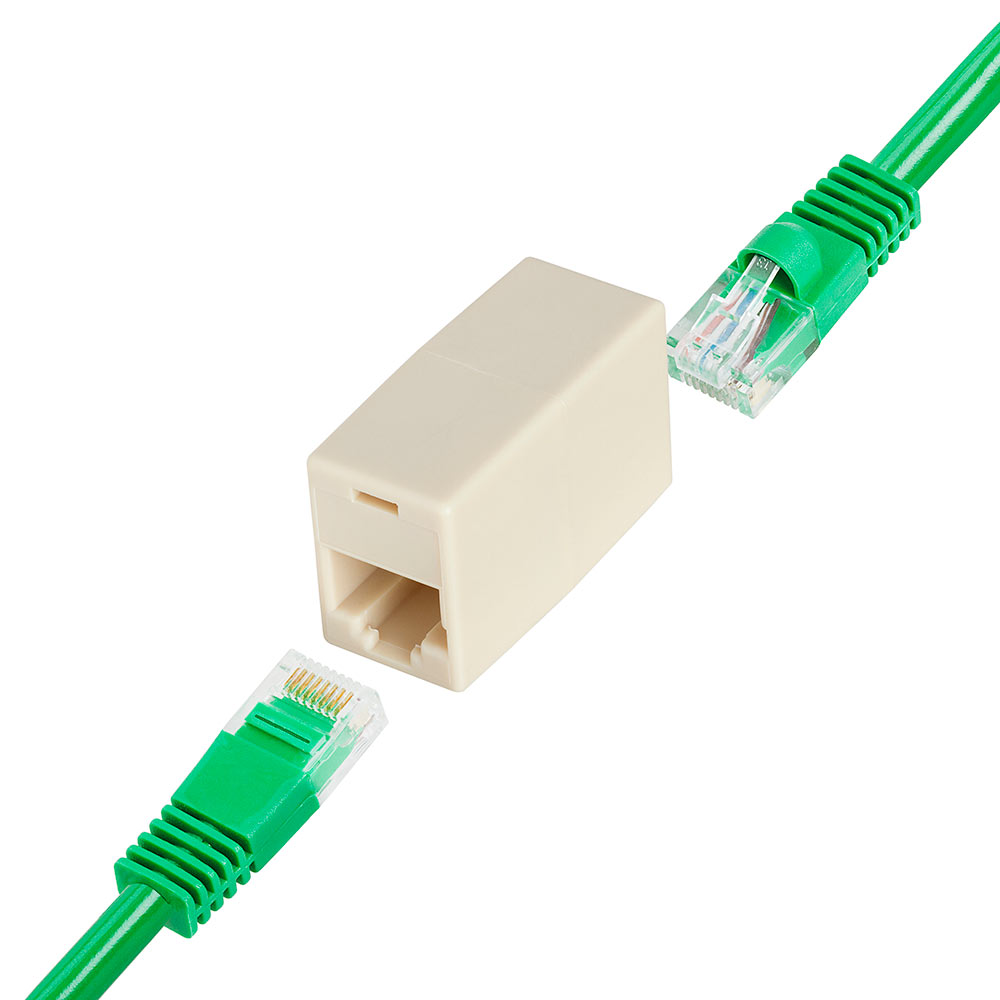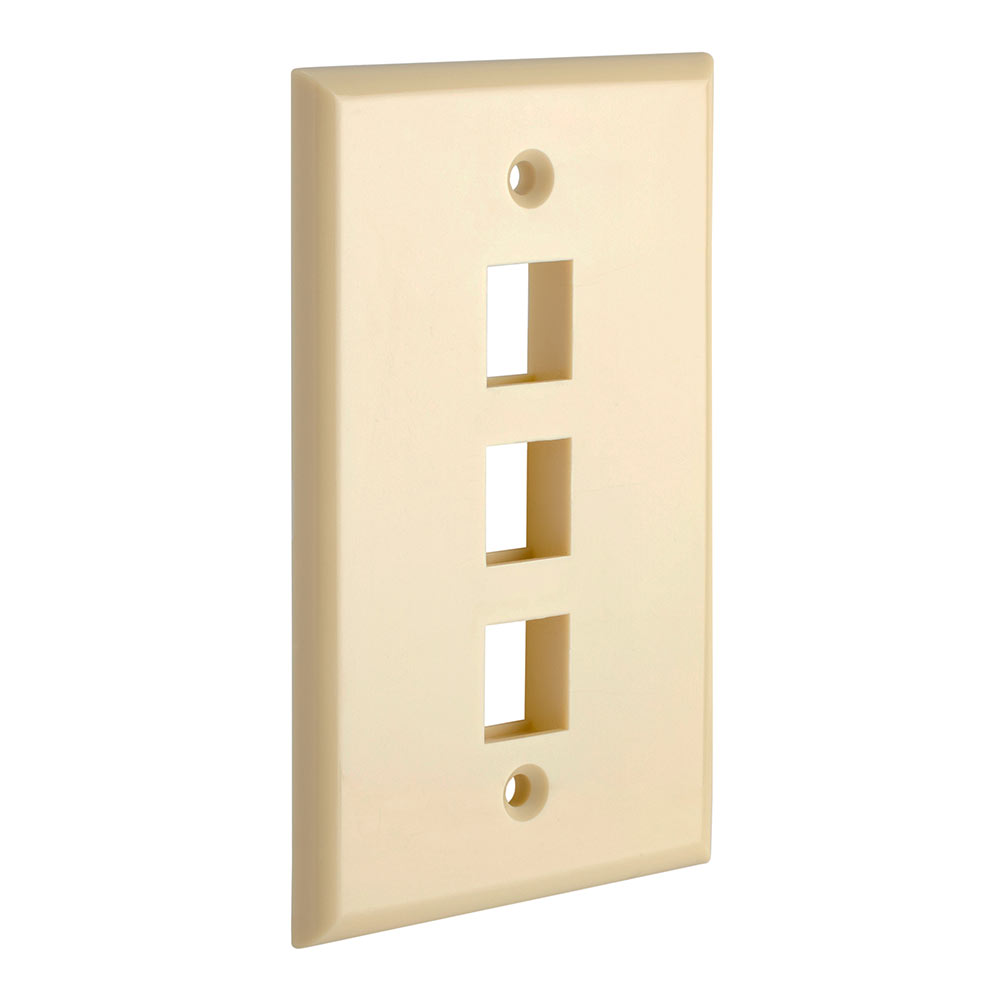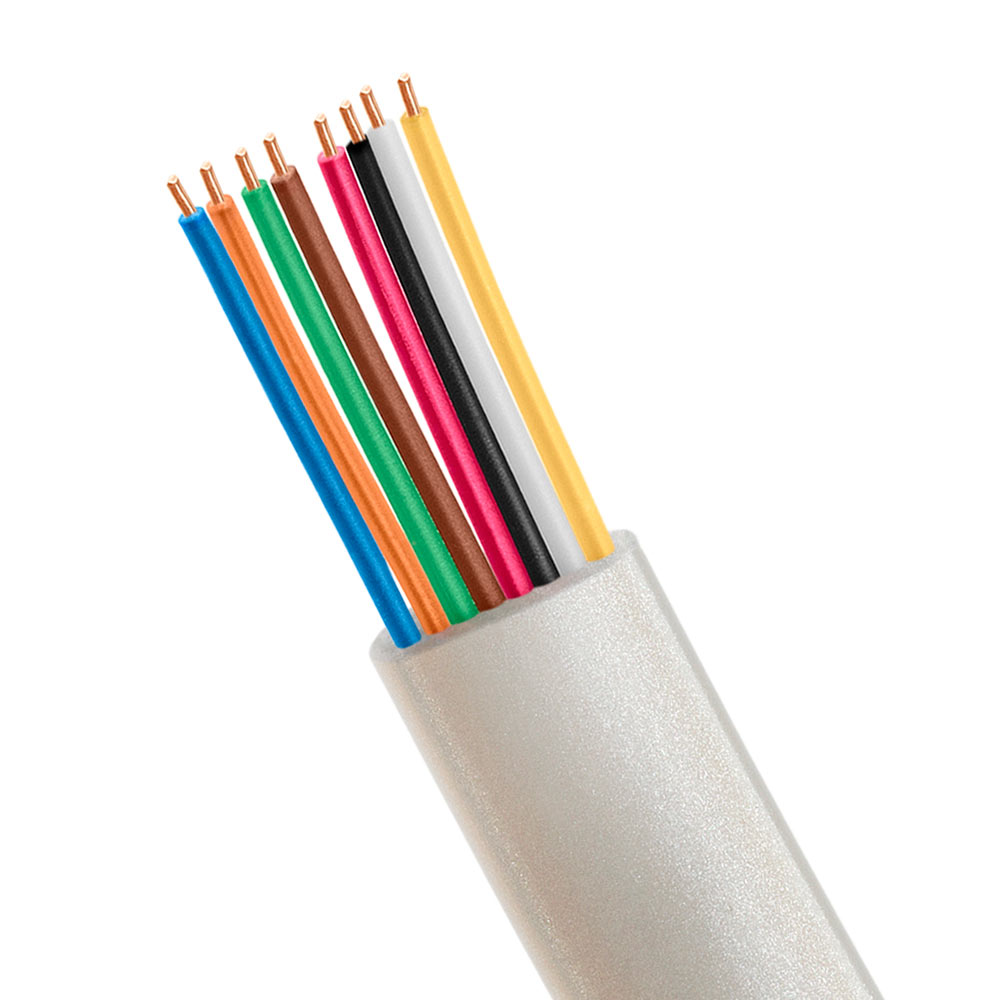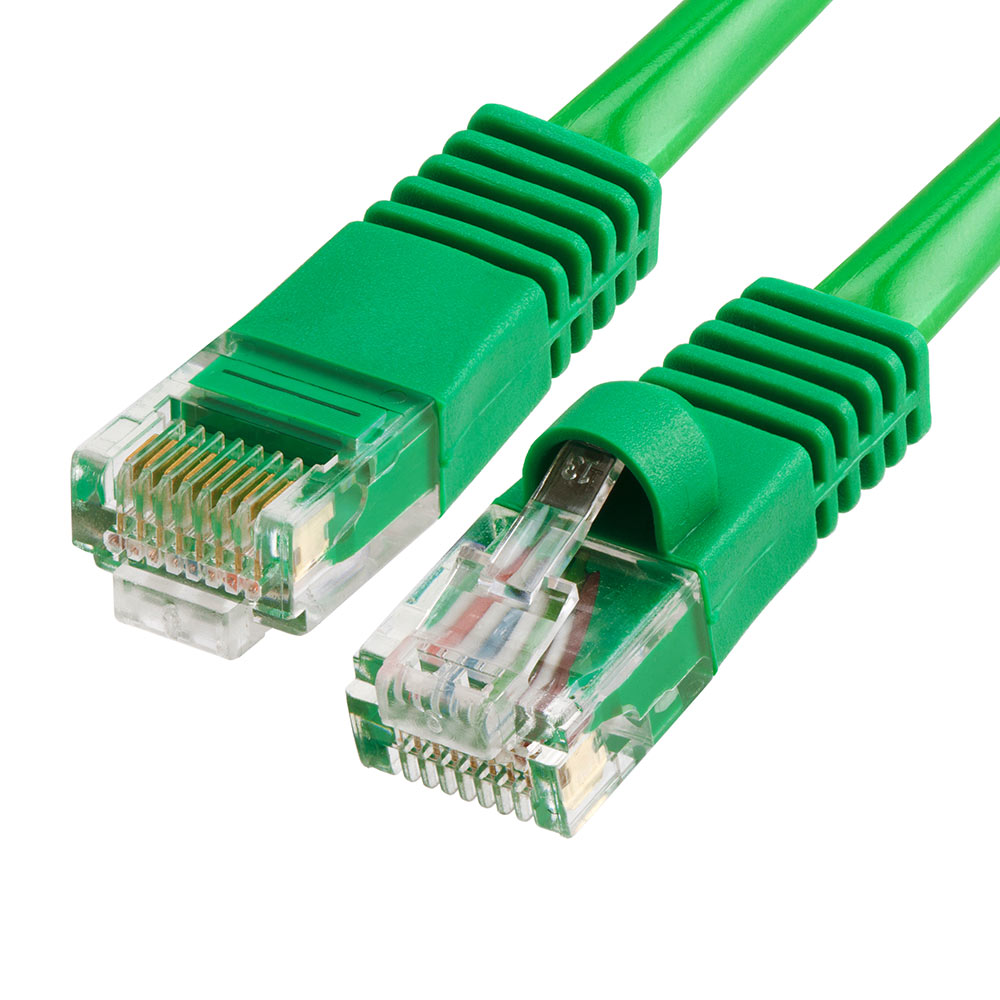Learn About Inline Couplers For Phone And Ethernet Cables
We’ve all used extension cords throughout our lives. Most of us have also used cube taps (the odd-looking rubber devices that you plug into a wall to turn one AC socket into multiple sockets), power strips, and other goodies designed to let you power electrical devices, wherever they are, by transferring electricity from point A to point B.
But when faced with the need to get an audio or video signal from point A to point B – and holding a cable that isn’t long enough to get the job done – what then? Often, people just run out and buy a longer cable. In many cases, though, the best solution is one that’s simpler and much cheaper: an inline coupler. When you look at the cost of a long telephone or Ethernet cable, and compare it to a coupler which costs well under a dollar, there’s really no decision to be made: you need an inline coupler.
What Is An Inline Coupler?
Think about two lengths of rope that you want to tie together; all you have to do is connect the two pieces with a knot and you’ll end up with a much longer rope. If you have to “tie together” two similar cables, an inline coupler performs a function very much like the knot. The process is a lot more complicated, of course, because there have to be perfect connections between all of the wires in each cable.
More rigorously defined, an inline coupler connects to one end of a cable and allows the same type of cable to be plugged into its other side, forming a seamless connection between the two. It’s the ideal way to “lengthen” a cable run. Otherwise you’d have to cut the connectors off of each cable and splice the two cables together, or as mentioned earlier, buy a longer cable.
Inline couplers are small, easily fitting into the palm of your hand. They’re inexpensive; Cmple sells some types of inline couplers for as little as 39¢ (a lot less, incidentally, than you’d pay at most electronics or big box stores). Inside, though, they’re a marvel of technological perfection, ensuring that as many as eight connections on each side are aligned just right and secured firmly, so signals will pass through them without any loss of signal integrity or lag.
Types of Inline Couplers
The examples we’ve been giving focus on the most commonly-seen type of inline coupler, one which is used “out in the open” simply to connect two similar cables. It might be utilized for cables run alongside the floorboards, across a room for a temporary connection which will be needed for just a short time or even inside a wall or ceiling – although the next type of coupler we’ll next discuss is more satisfactory for those applications.
The second type of inline coupler involves the use of modular faceplates, surface mount boxes, patch panels or other fixtures that accommodate Keystone modules. To understand how these couplers work, we’ll take a brief detour and first explain the concept.
Keystone modules are designed to simplify the process of connecting low-voltage, audio, video or optical cables that must run through walls or ceilings, or other hidden or crowded spaces. The modules are a standard size, 14.5 by 16 millimeters, with flexible tabs on the sides. The tabs let you quickly snap the modules into ports on matching (and also standard) mounting plates, panels or boxes. Some Keystone modules are designed to be hard wired on the back, with a jack that accepts a cable plug on the front. Others are constructed to have jacks on each side. No matter what type of connection a module will accommodate, the module itself is always the same size so it will fit into any Keystone port.
The most common placement of a Keystone jack is in a Keystone wall plate, which looks quite similar to a standard electrical outlet. You’ve certainly seen telephone wires that plug right into a telephone jack on the wall; in most cases, the jack is really inside a Keystone module.
That brings us back to the other important type of inline couplers – the ones that aren’t visible “out in the open.” These couplers take the form of Keystone modules which can be snapped into any sort of Keystone port, whether it’s mounted on a wall plate, patch panel or similar location. The inline couplers have matching jacks on each side, so one cable is connected behind the wall or panel, and the other cable can be plugged into the front jack in less than a second. It’s the permanent and much more elegant alternative to using a simple inline coupler on cables run behind walls or in patch panels.
Common Connections Made With Inline Couplers
In theory, couplers can be used to connect any two cables of the same type. For example, they’re quite common in cars and trucks to connect their internal wiring. Inline couplers used most often in data and telecommunications environments are the ones which connect cables terminating in RJ11, RJ12 or RJ45 (8P8C) plugs, and there are different couplers available for each of those plugs which will accommodate either straight or crossover connections.
RJ45 couplers are used for Ethernet LAN networks. They can extend a network cable so it will reach a computer or other device, or can be used through a Keystone module to allow you to easily plug any computer into a network jack. It’s important, though, to select the proper inline coupler to match network wiring. For example, not all Cat6a cables will deliver optimal signal quality when connected through a Cat5e coupler; it’s best to purchase a Cat6a coupler in that case. Smaller RJ11/RJ12 inline couplers are primarily used with phone cables to connect telephones or fax machines, or those facilitating VOIP communication via devices like cable modems. Once again, you can find simple inline couplers or Keystone module couplers that take RJ11/RJ12 plugs.
Cmple carries a large selection of inline couplers for all common uses, all manufactured to our strict quality standards. Couplers won’t cost you very much, but there’s no sense in paying more than you have to – and Cmple’s pricing for inline couplers, and all other cables and accessories in our enormous inventory, can’t be beaten.









